
Blog
Interview with Zidans Designer Lilia Kosyreva about the New Collection CONTROL OUT OF CONTROL
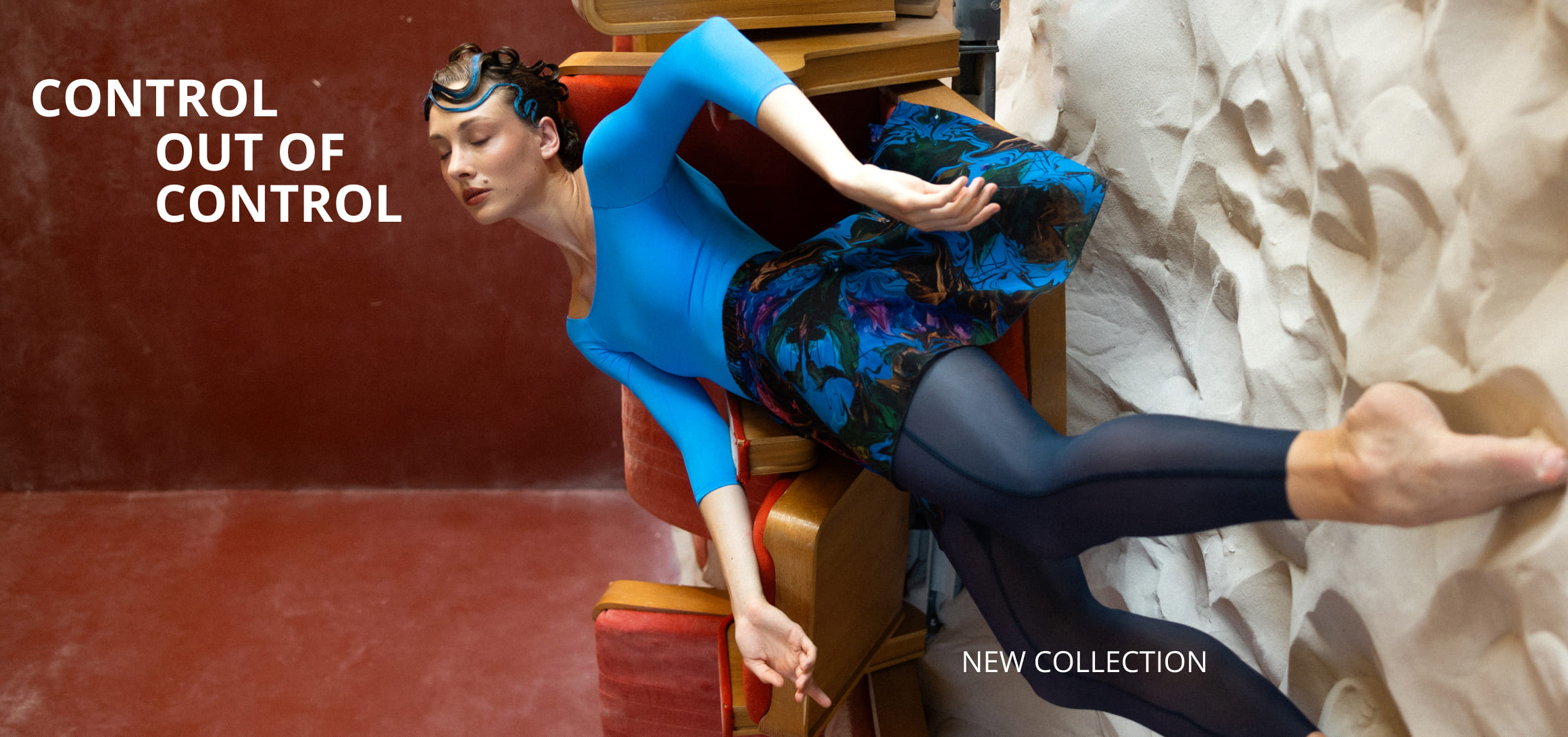
Ph Alexandra Luchinkina | Md Darya Plastun | Muah Kristina Shulgа
On October 14, Zidans presented its new collection, CONTROL OUT OF CONTROL. We spoke with Lilia Kosyreva,
the designer behind this and previous collections of the brand, about new concepts, chaos, change, control,
and the lack of it. Read more in our conversation!
Lilia, what is the new collection about?
The collection explores how people and their bodies adapt to circumstances and changes beyond their control.
For example, we have no control over our bodies, which inevitably change over time; no control over a stage
partner’s mood on a given day; and no control over the actions and thoughts of others who hold power. 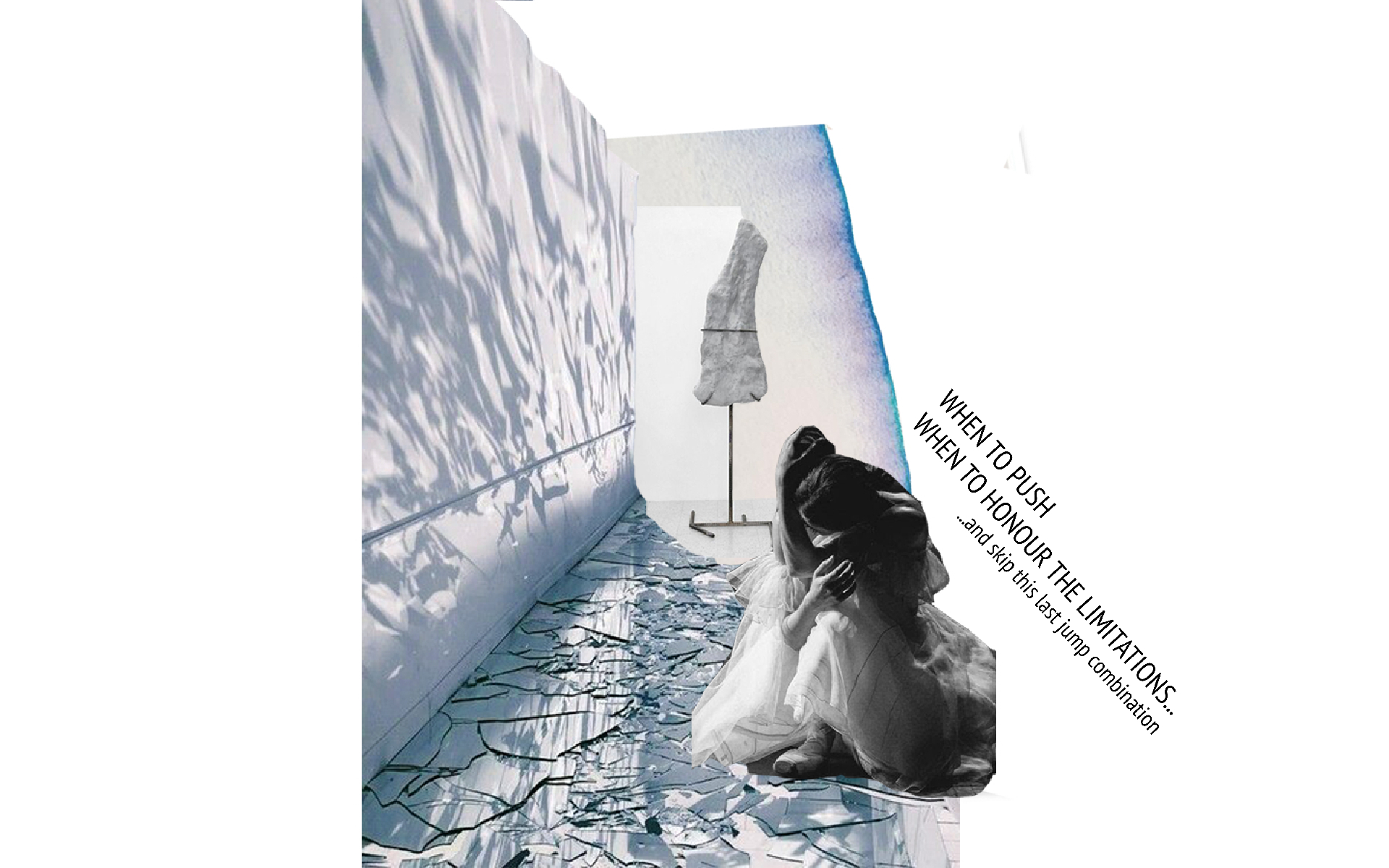
Moodboard of designer Lilia Kosyreva
You mentioned that for both of your previous collections, "Stained in Print" and CONCEALED, the starting points
for developing the concept were specific urban phenomena: Moscow mud and dirt, and the facade netting that
hung on a building for several years. What was the starting point for this new collection?
The starting point came from observing the city (country, world) as a system and the person who is part of it, dependent
on external and internal factors. I observed how my body and I react to shifts in this system, how it resists changes, shifts
perspective, and eventually accepts the inevitable.

Moodboard of designer Lilia Kosyreva
I've seen your very first mood boards. How do they relate to the collection?
What’s the process of transforming such collages into specific items?
Mood boards are a visual story of the collection. I start with a broad idea—in this case,
the loss of control—and use mood boards to develop this thought, finding the colour palette,
design techniques, silhouettes, and elements for the dancewear design. 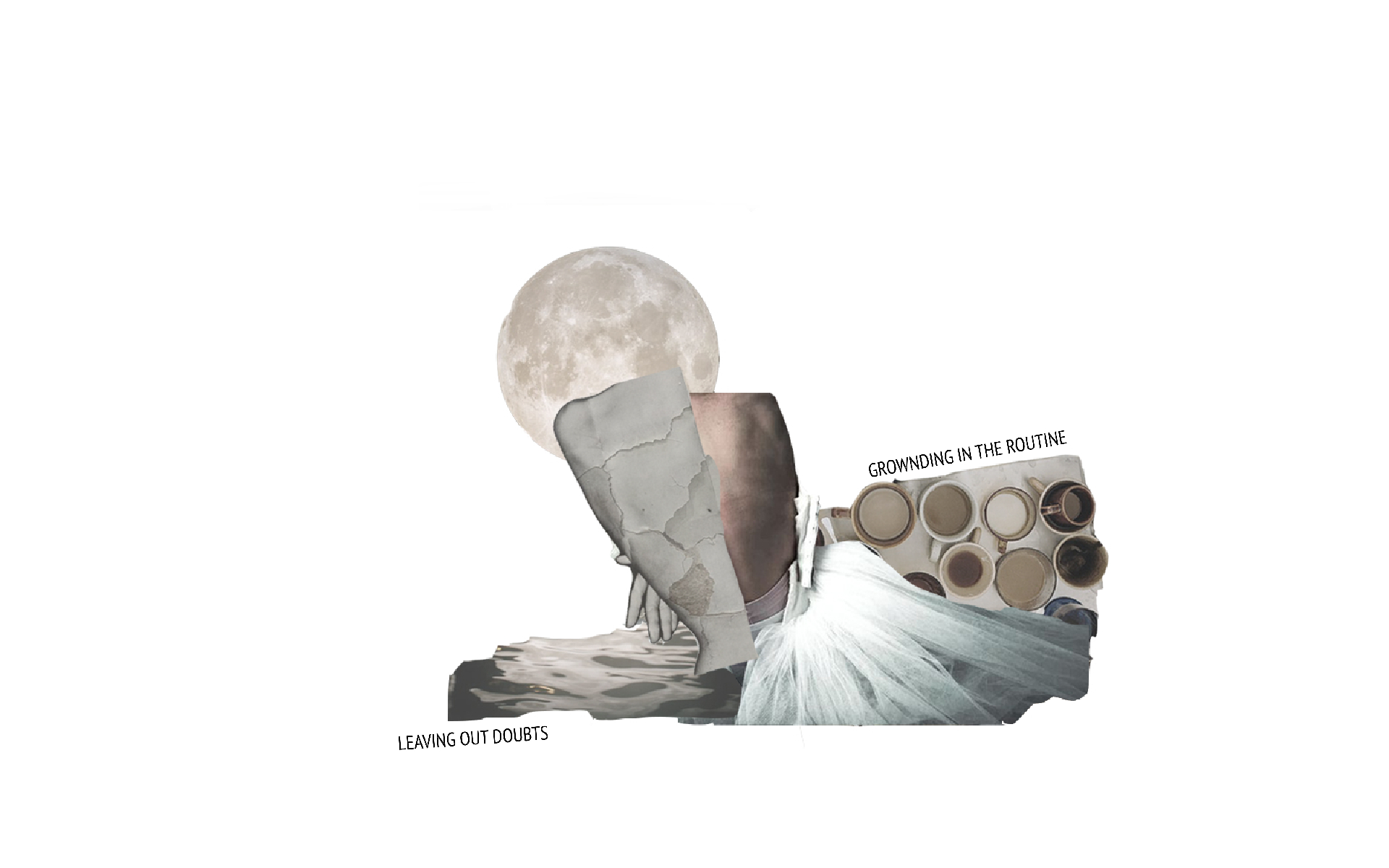
Moodboard of designer Lilia Kosyreva
For example, one of the first elements of the collection is sand. Its properties perfectly embody
the theme of control: unstable on the surface but increasingly stable with depth. Sand is influenced
by wind and water, yet ultimately remains in place despite these forces.
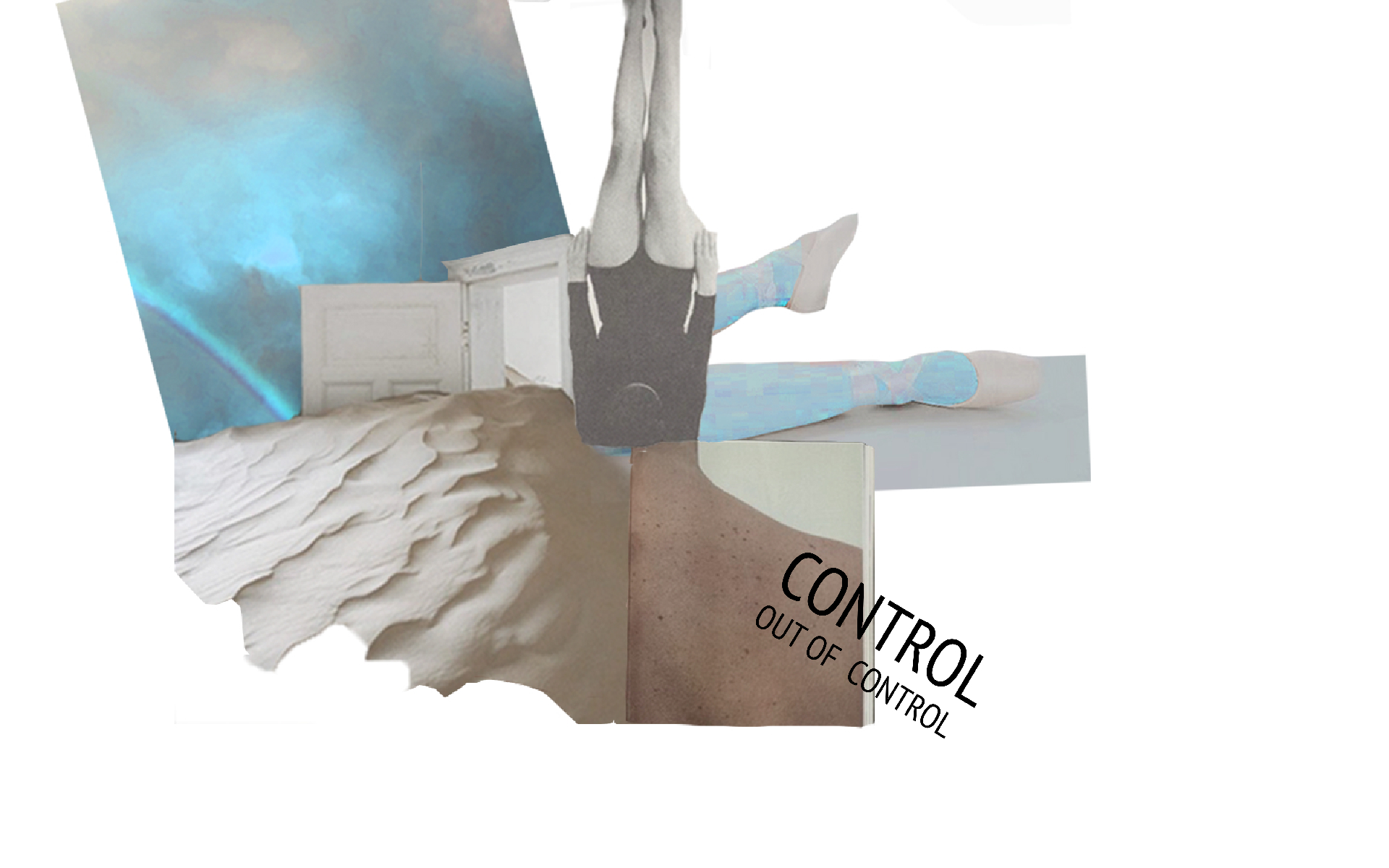
Moodboard of designer Lilia Kosyreva
This idea was translated into the colour palette, where the focus
is on the forces of nature that elevate and ground us.
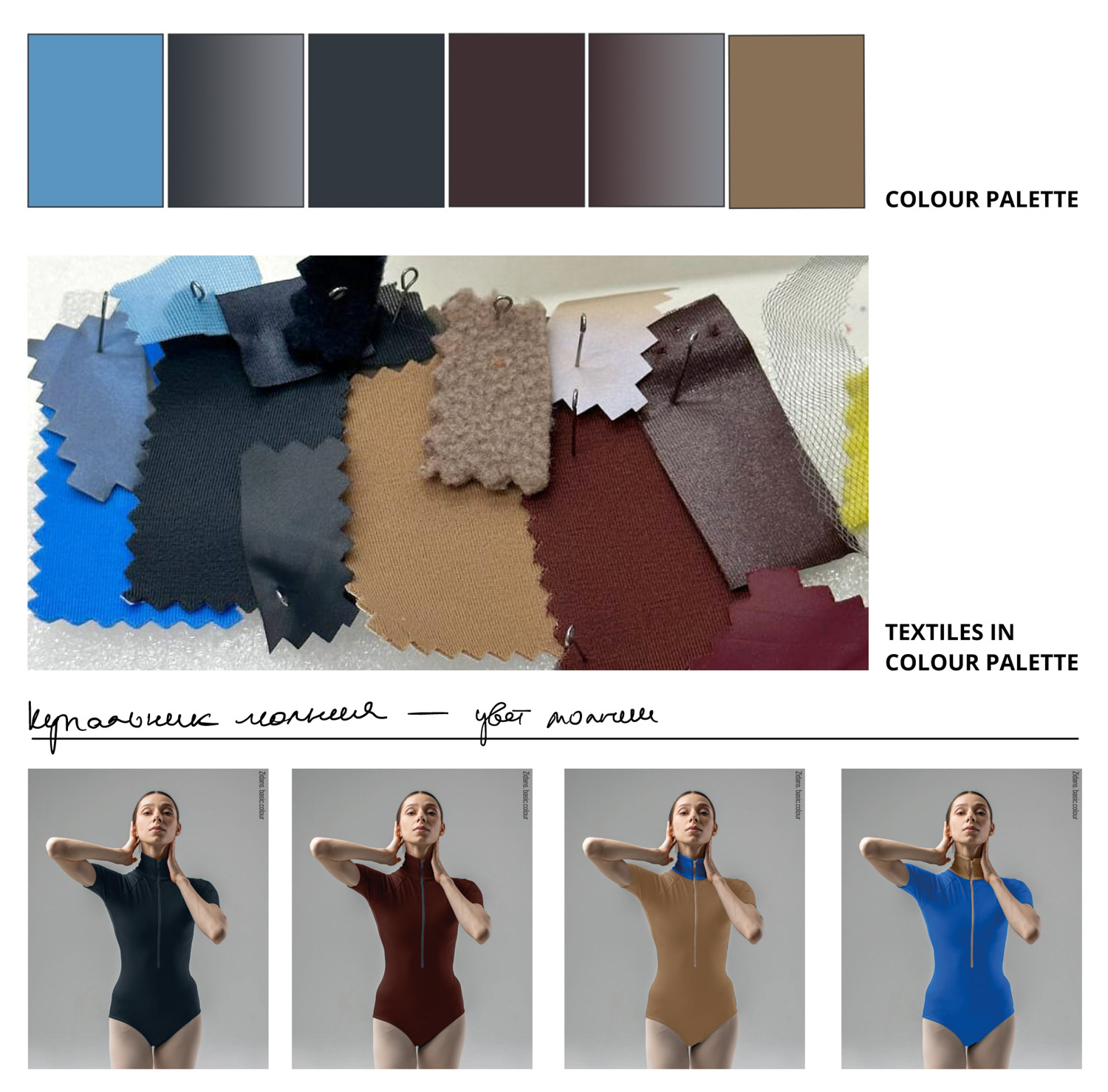
It’s also reflected in the idea of gradual filling or emptying: the tops of leotards
change colour and texture, resembling the gradual onset of changes.
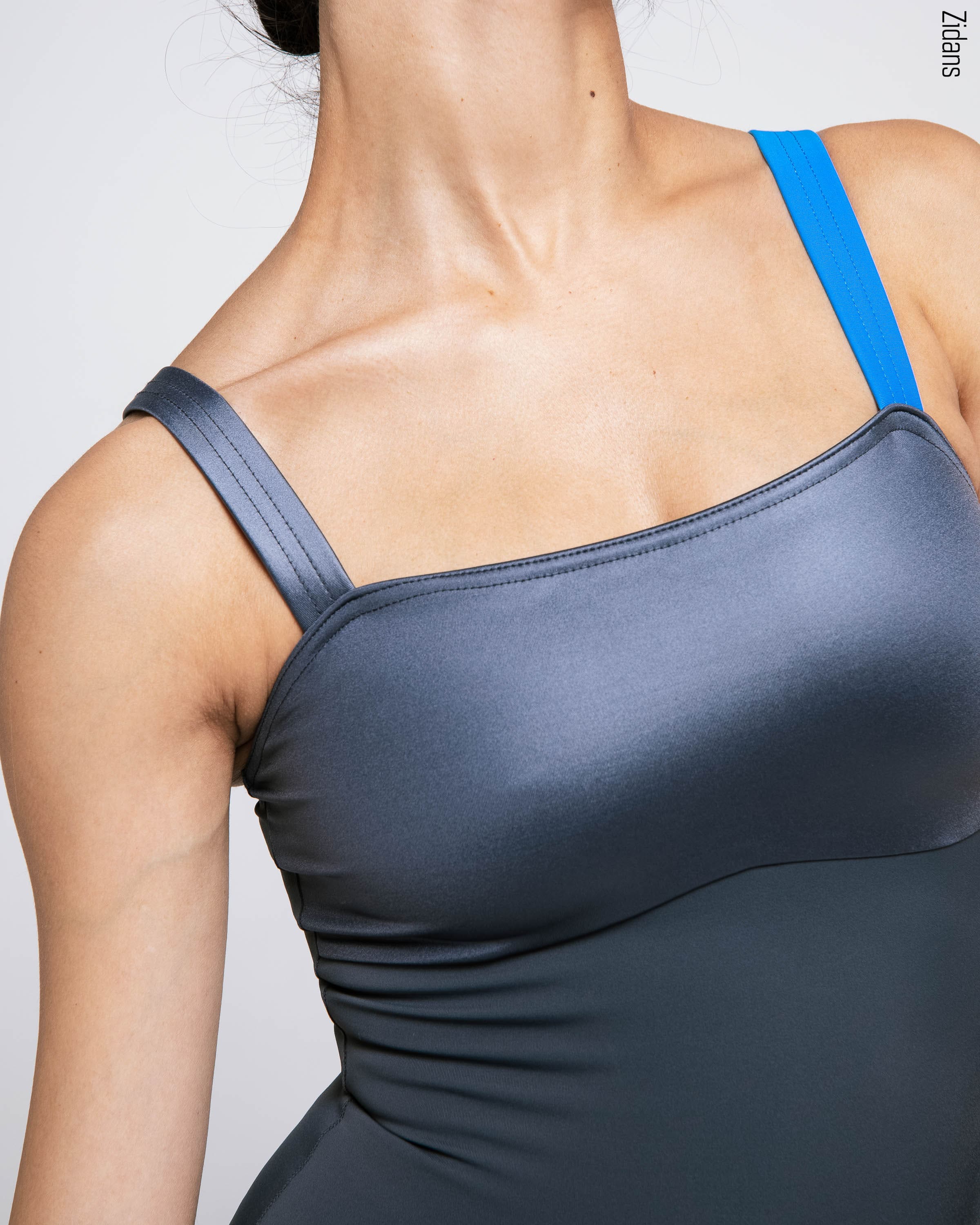

Md Daria Iurchenko
The blue colour is used as a contrast, sometimes emphasizing that the path to control
is a shift in perspective, through a play of opposing forces. In this case, the sky (above)
and more grounded colours (sand, rock, ground).
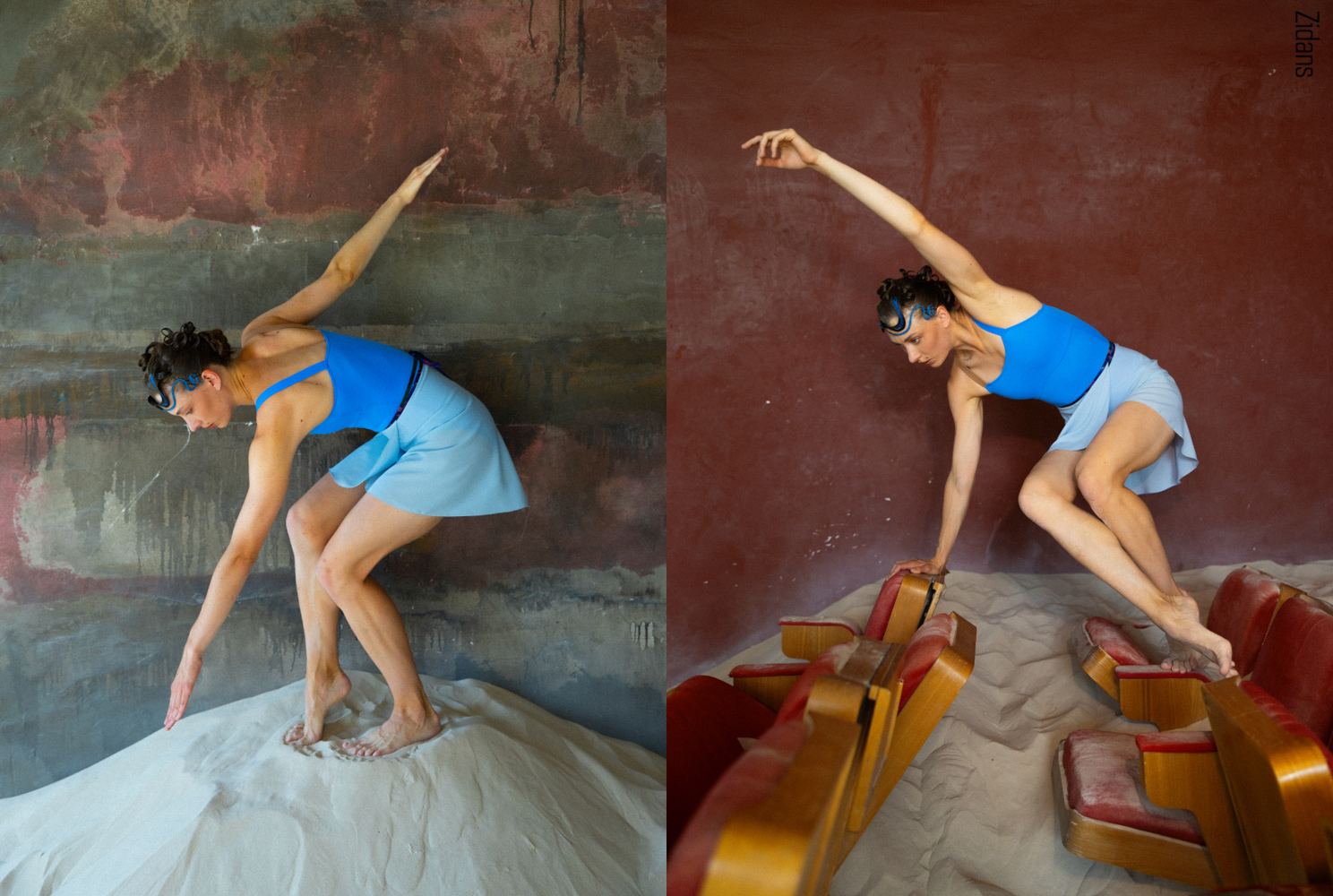
Ph Alexandra Luchinkina | Md Darya Plastun | Muah Kristina Shulgа
This play of forces is also reflected in the new branded elastic, where the print and slogan
are angled, imitating the process of falling and searching for balance.
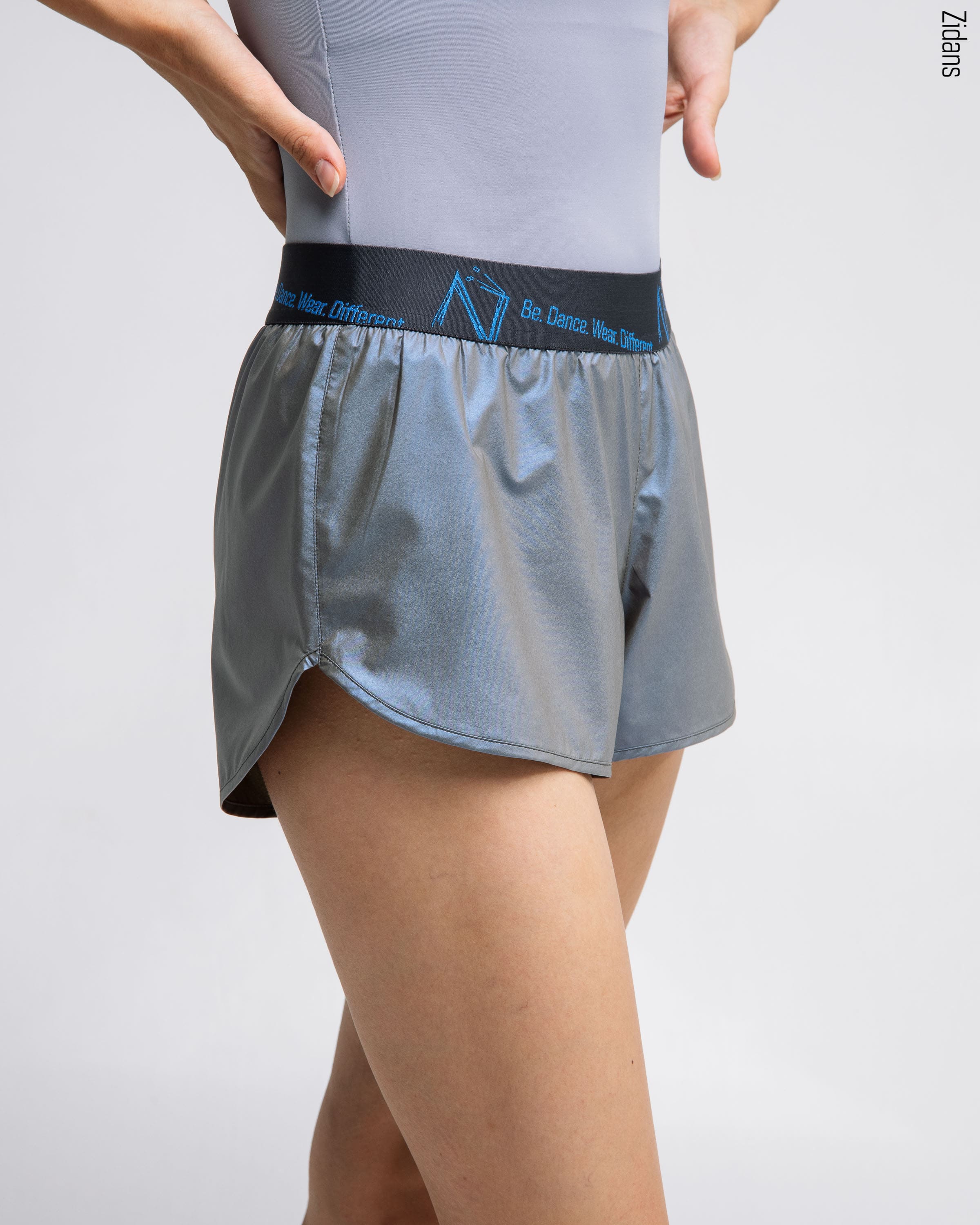
Md Daria Iurchenko
The collection is full of other meanings, which I leave open for interpretation by those
who wear Zidans items and discover their own meanings in them.
Can you tell us more about the prints in the collection?
What are these images, and where do they come from?
At the heart of the work is an image of falling leaves on chlorinated water illuminated by light.
For the print, the leaves are stretched and twisted, as if part of the image came to life
under the influence of the current.
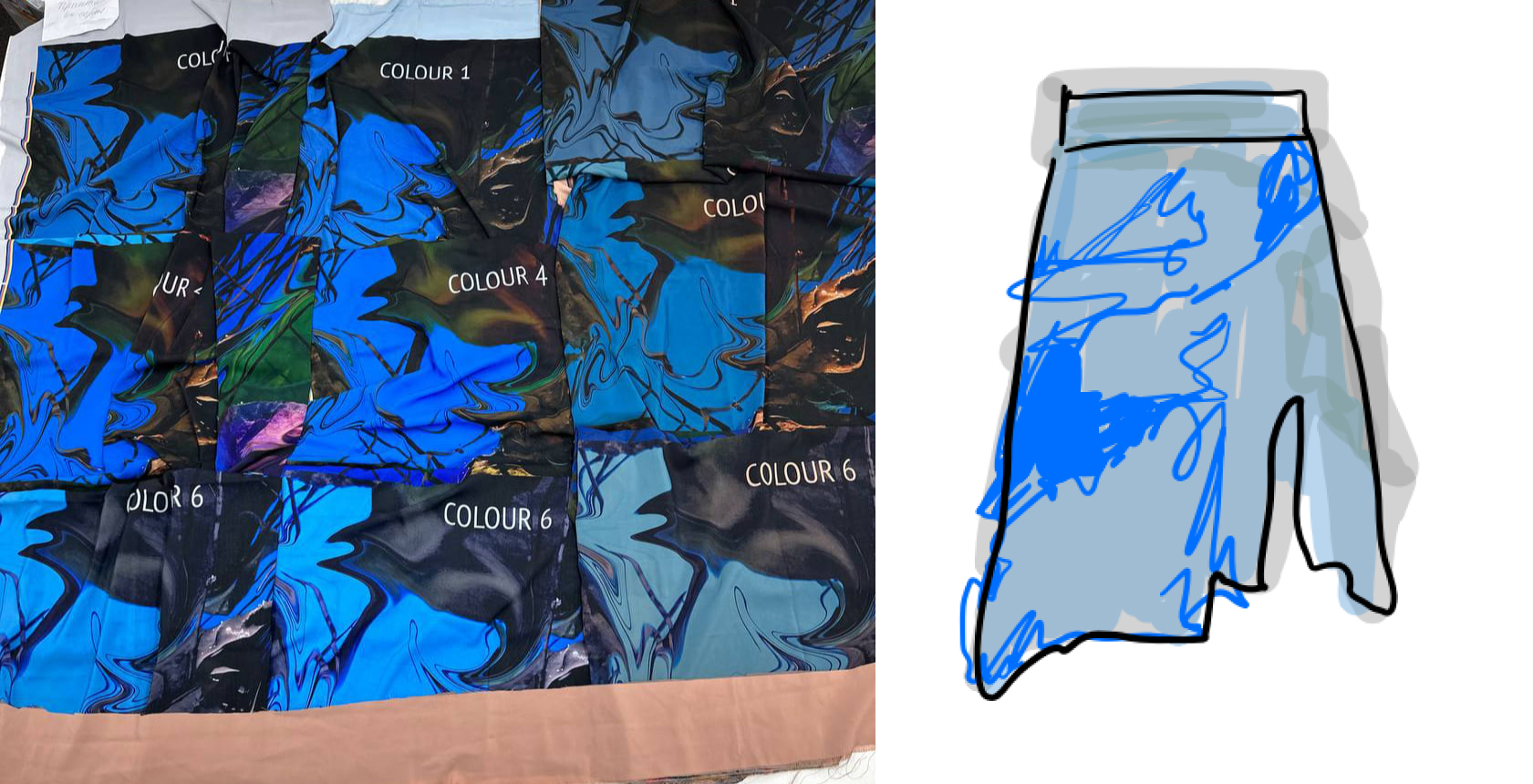
This photograph was taken a couple of years ago, and it immediately came to mind when I was thinking
about the concept of losing control. The contrast between the perfectly controlled environment
of the pool, where everything is regulated—from the temperature to the colour of the water—and
the chaotic, uncontrollable fall of the leaves captures this idea perfectly.
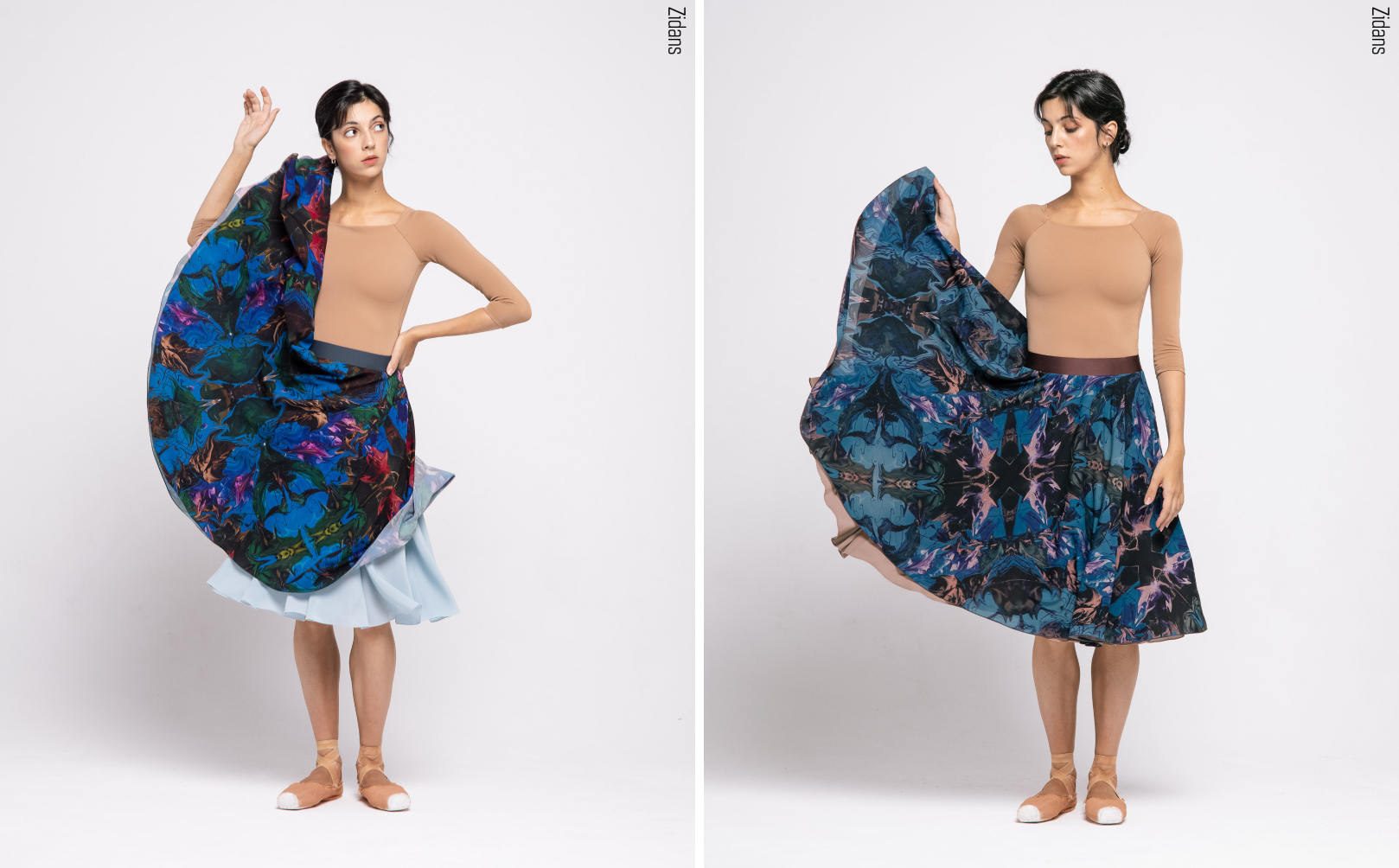
Md Daria Iurchenko
The print comes in two colour variations to show how the same phenomenon can be perceived differently.
This time, we decided to print on pre-dyed fabric instead of white, which visually enriches the piece
with shades created by the base fabric colour.
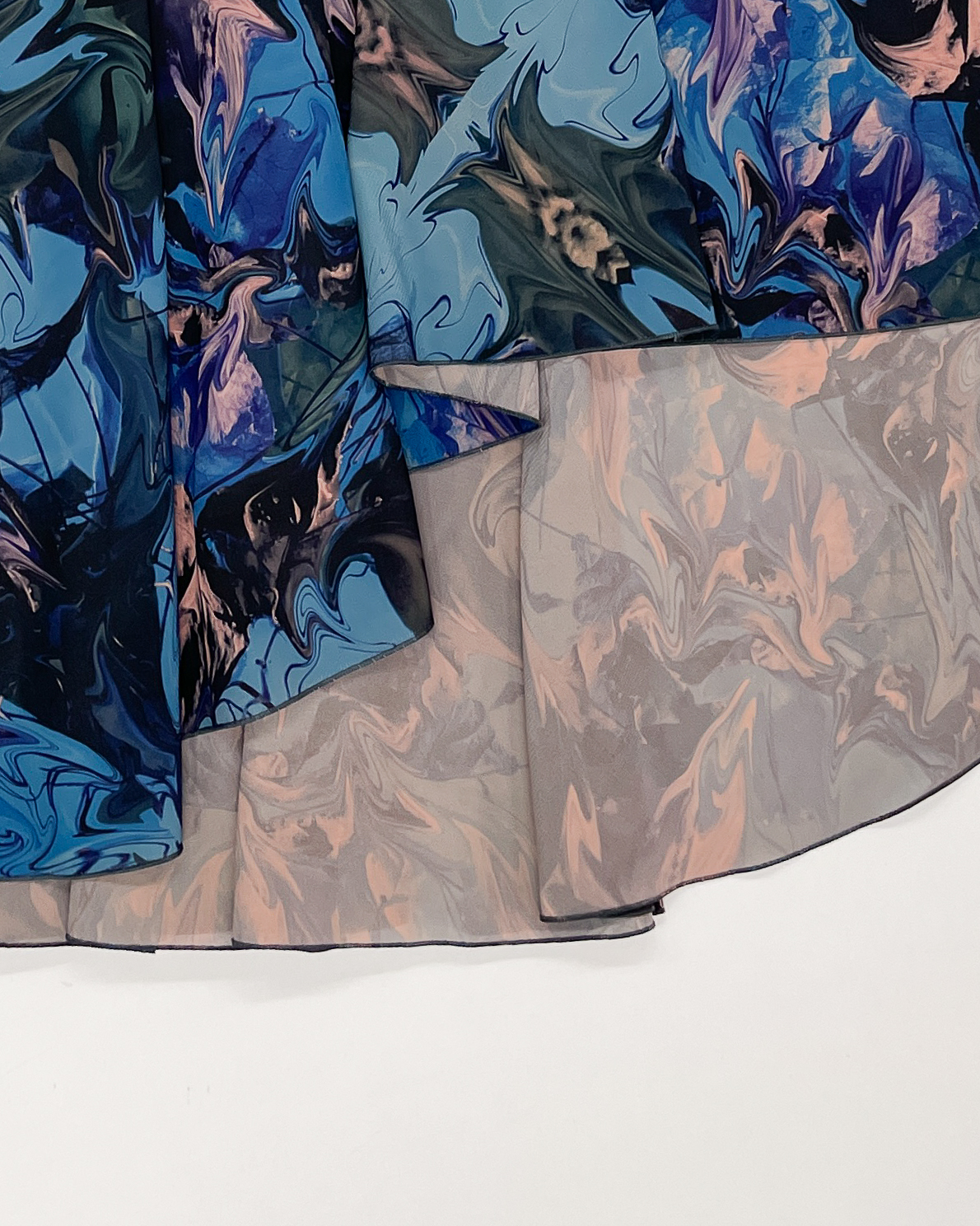
Additionally, the items become truly reversible. This also symbolises the idea that any change and loss
of control overlays an already existing foundation—our beliefs, which influence how we regain control.
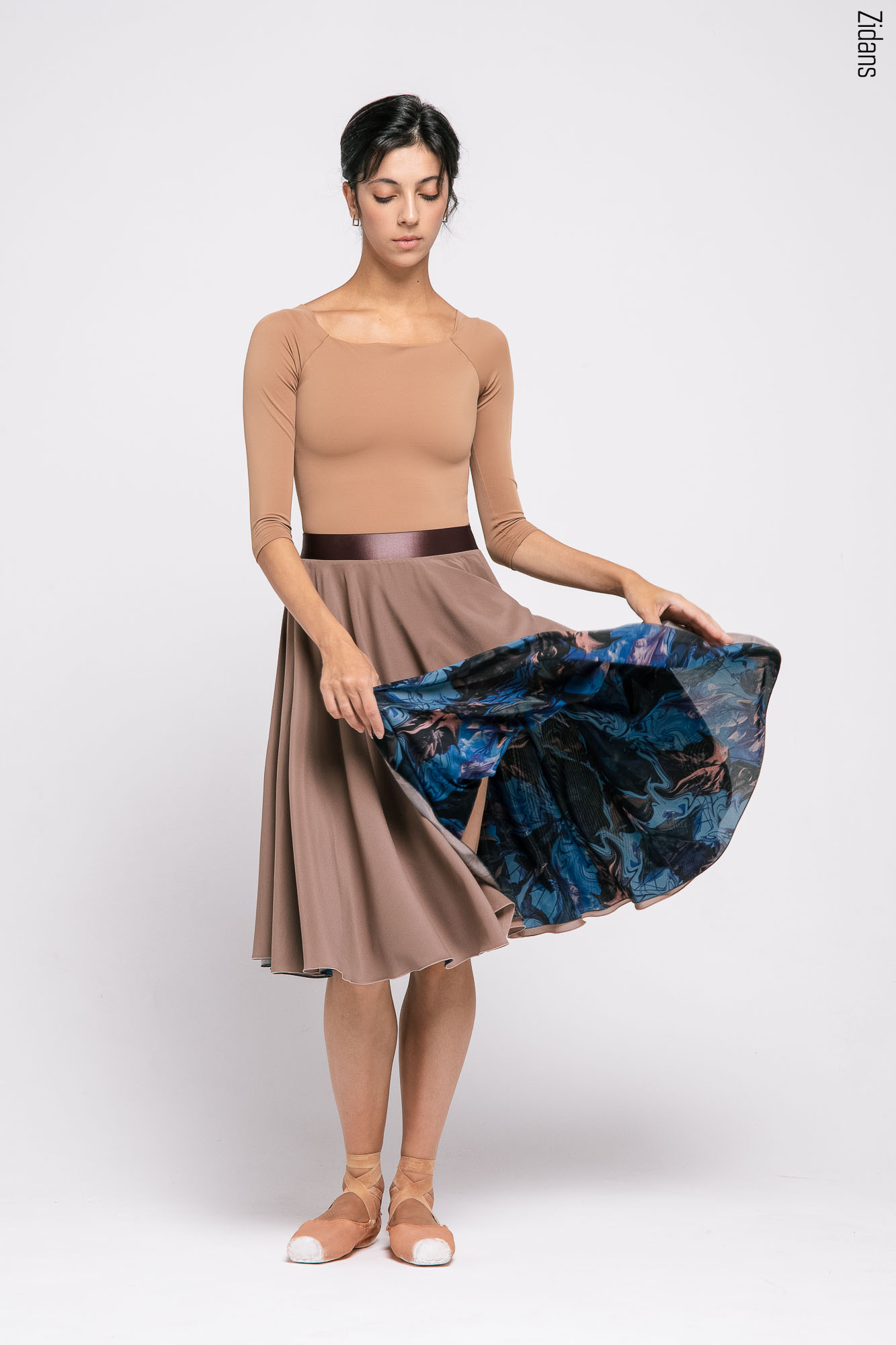
Md Daria Iurchenko

